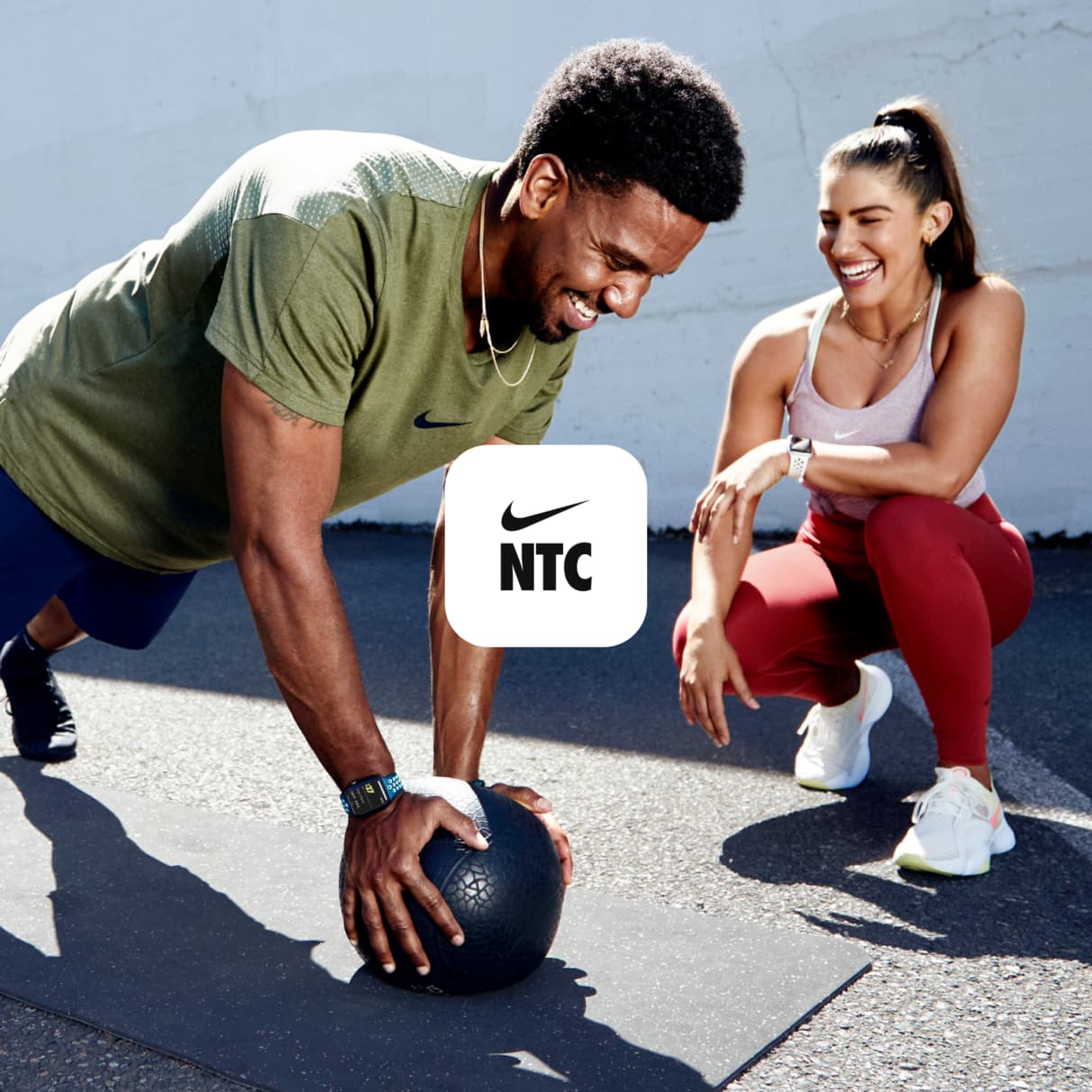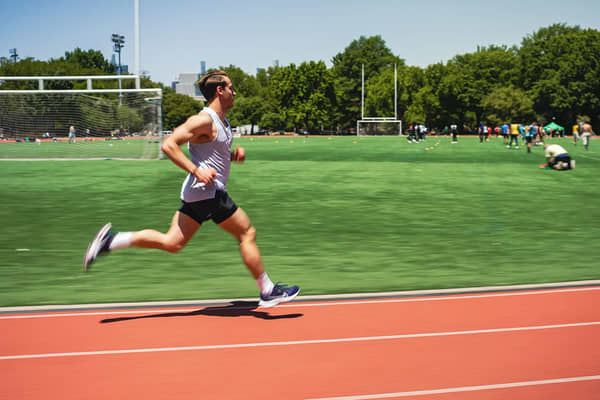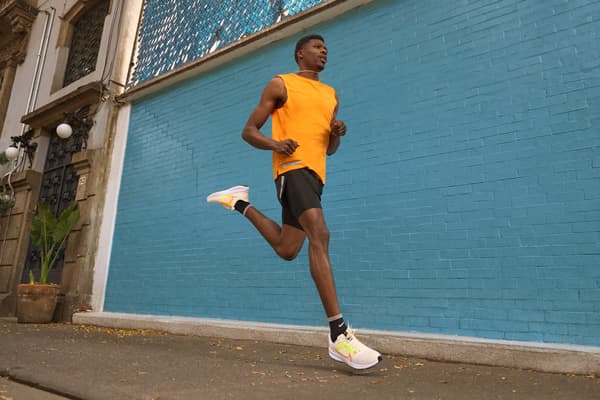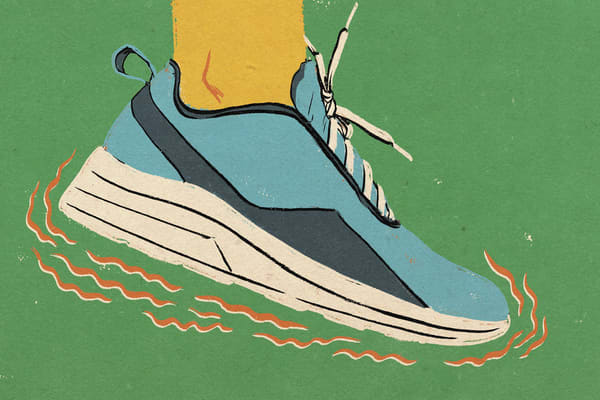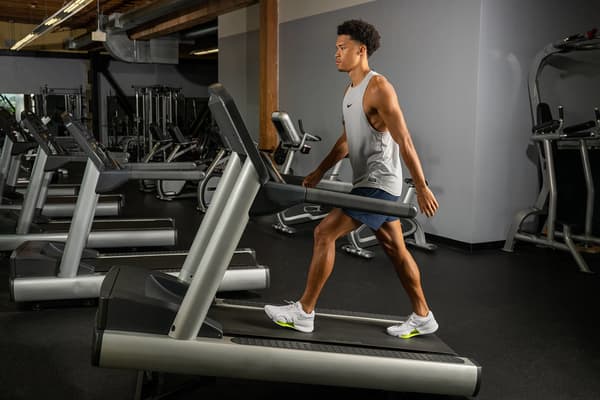Experts Explain Why Ankle Mobility Exercises Can Level up Your Workouts
Sport & Activity
Plus, four foundational ankle mobility moves to promote stronger, safer workouts.

Ankle mobility sets the foundation for how your entire body moves, feels and performs.
After all, whether you're running, walking, cycling or squatting in the gym, the only thing between you and the ground is your feet (and shoes!). And your ankle is the link connecting your feet with the rest of your body, said Audra Wilson, CSCS.
(Related: What Is Power Walking—And Do You Need To Add It To Your Weekly Workouts?)
Below, experts explain what ankle mobility is, why it matters, and the best ankle mobility exercises for strong and safer workouts.
What Is Ankle Mobility?
Ankle mobility is the sum total of how the ankle moves during activity, said Louis Howe, PhD, MSc, an ankle mobility and rehabilitation researcher and lecturer at the University of Essex.
Six Movements That Make up Ankle Mobility
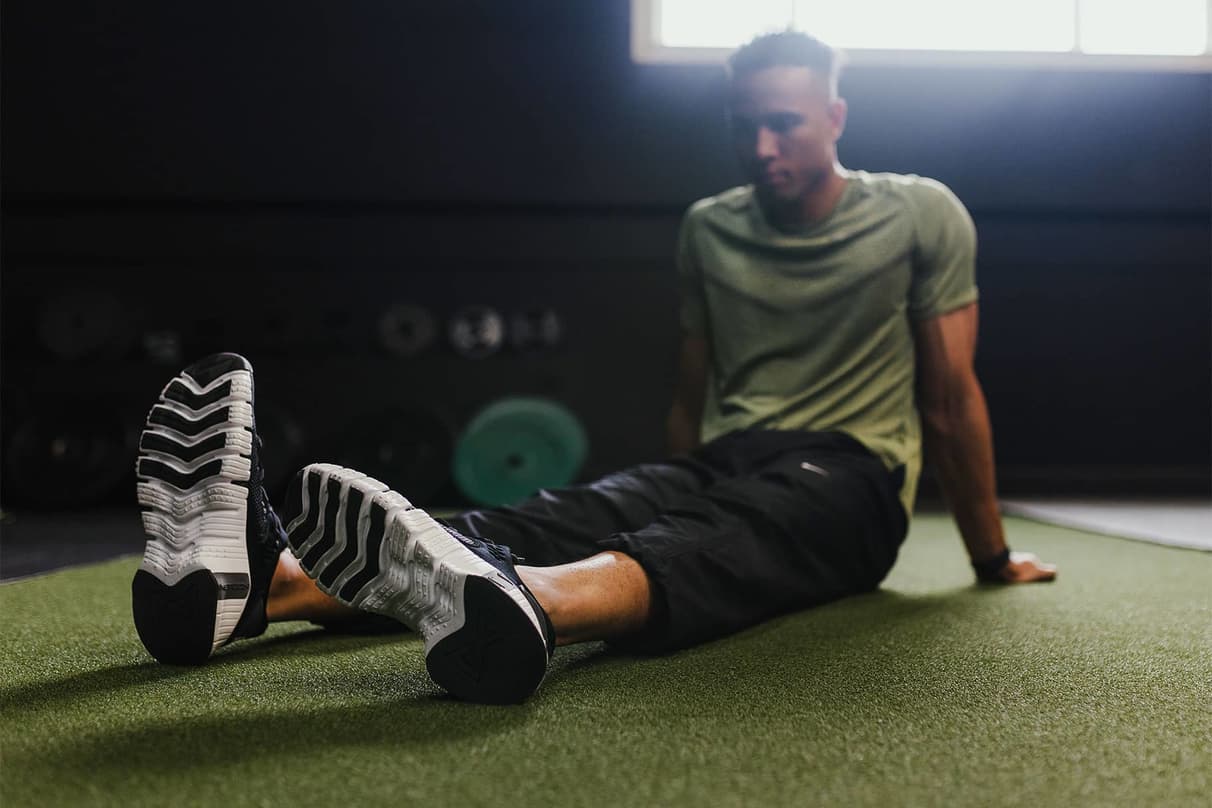
- Dorsiflexion: flexing your foot or bending the foot towards the front of the body
- Plantar flexion: pointing your foot away from your body
- Inversion: tilting your foot inwards, towards the midline
- Eversion: tilting your foot outwards, away from the midline
- Medial rotation: pointing the front of your foot inwards, towards the midline
- Lateral rotation: pointing the front of your foot outwards, away from the midline
It's important to note that while flexibility affects mobility, they aren't one in the same. Flexibility is a measure of how well muscles relax and stretch. Meanwhile, mobility looks at the entire joint and evaluates how it moves in real life.
Many factors outside of muscle flexibility—such as age, biological sex and exercise history—affect how your ankle moves. Mobility also depends on how your joint is structured, as well as the strength and elasticity of surrounding tissues, Howe said. These include muscles as well as ligaments, tendons and fascia.
3 Benefits of Ankle Mobility
Improving and maintaining healthy ankle mobility can reduce your risk of lower-body injury, help you get more out of your workouts and improve exercise performance.
1.Reduced Risk of Injury
How well your ankle moves is a main predictor of future ankle injury, Wilson said.
Research shows the joint takes on forces of about five times your body weight during walking and up to 13 times your weight during running. Healthy mobility protects the joint from these forces. It also ensures weight is distributed across the ankle joint in a healthy way, said Natalie Sampson, PT, DPT.
But, healthy ankle joint mobility also lowers your risk of a whole host of lower-body injuries, Wilson said.
That's because when your ankle's range of motion is limited, other joints in the kinetic chain—the musculoskeletal links that connect your toes all the way to the top of your head—have to make up for it, said Wilson. And, research has linked poor ankle mobility with a higher risk of knee, hamstring and hip injuries.
2.Have Faster Runs
Improving ankle mobility can assist your running performance. As you push off the ground, three major joints have to extend: the hip, knee and ankle. This move is also referred to as a triple extension.
That extension of the ankle increases how much force you exert into the ground, and how much power you produce, Wilson said. It decreases the angle between your shin and the ground. As a result, it allows you to move forwards with each stride.
Case in point: try to run on your heels. How'd it go? Probably not very fast. Then, stand still and quickly plantarflex (extend) your ankle to push off the ground through the balls of your feet. You probably caught some air.It's a small movement, but optimising this range of motion is a difference-maker for anyone seeking a running personal record (or to improve their speed).
3.Get Better Form
Getting the most of any exercise hinges on moving well.
The squat is one such example. During the lowering phase of a squat, the ankle needs to dorsiflex (think: shin to toes). That motion is what allows the shins to angle forwards and the thighs to get parallel with the floor.
If your ankles aren't able to fully dorsiflex, you probably won't be able to lower as far into each rep without falling backwards, Wilson said. As a result, your quads may get less of a workout. This is because shallow squats are more or less a hip hinge, and the move recruits fewer muscle fibres. Note, tightness in the calf complex can also interfere with squat depth.
For this reason, some strength training athletes wear special weightlifting shoes during squats. These shoes have solid, raised heels that mimic dorsiflexion by letting their shins move further towards their toes. It also releases tight Achilles and calf complexes. As a result, this enables a person to squat low.
However, if you find that your shoes are getting in your way of your ankle moving freely, consider taking them off.
(Related: The Best Nike Shoes for Weightlifting)
Ankle Mobility Test
The most common ankle mobility issue is a lack of dorsiflexion, Howe said. Check yours with this at-home test. However, before doing any mobility check at home, it's always a good idea to touch base with your doctor, physiotherapist, certified personal trainer or strength coach.
- Remove your shoes. Face a wall and kneel with one knee on the ground. Place the other foot firmly on the ground.
- Make sure the big toe of the foot that is firmly planted on the ground is about 13cm from the wall.
- Shift your weight forwards to try to touch the wall with your knee.
- Repeat the same movement on the other leg.
Your goal is to touch your knee to the wall AND:
- Keep your heel planted on the ground.
- Keep your knee in line with your toes, not letting it collapse in.
- Have no discomfort.
If you can't check all these boxes now, know that targeted training can help.
Ankle Mobility Exercises To Try
Howe's research shows that just four weeks of ankle mobility training can make a meaningful difference in how you move. Consider integrating these four ankle mobility moves (courtesy of the experts) into your existing workout routine. You don't have to do them all at once. Before your lower-body and cardio workout, do one as part of your warm-up. Then do one more as part of your cool-down.
1.Elevated Eccentric Calf Raises

Eccentric exercises focus on strengthening muscles as they relax, and are very effective at improving joint mobility, said Howe. This variation takes things up a notch with an elevated surface. This lets you strengthen your whole range of dorsiflexion motion. Here's how to try it.
- Stand with your feet close together on the edge of a low platform, like a stair step.
- Position yourself so just the front of your feet are on the platform, and your heels hang off.
- Keeping both legs straight, raise up onto the balls of your feet.
- Pause. Then very slowly lower your heels as far as you can. Note, this move should be performed bilaterally.
- Optional: hold onto a sturdy object if needed for balance.
- Perform 8 reps, 3 sets.
Tip: Start out easy with this ankle mobility exercise. Once you see how your calves respond, you can add more reps or hold onto a weight for extra resistance.
2.Heel and Toe Walks

These simple drills train ankle health in a couple of ways, Wilson said. First, they get you to move through full dorsiflexion and plantar flexion. Then, they require you to isometrically hold that position—while walking.
- Stand with your feet close together, and raise up on your heels.
- Holding this position, walk forwards a given distance (think: to the other side of the room).
- Reverse the motion and raise up onto your toes.
- Holding this position, walk forwards a given distance.
Tip: Focus on walking slowly and with control. This is not a race!
3.Ankle Alphabet

This simple drill takes you through all six of the ankle's available movement patterns, but it's especially beneficial for training healthy ankle rotation, Sampson said.
- Sit on the floor with your legs extended and a rolled-up towel under your calves.
- Use one foot to write the lowercase alphabet in the air.
- Repeat on the other side.
Tip: You can also squeeze in this exercise while seated in a chair or at your desk.
4.Big Toe Stretch

Flip your foot over. Your plantar fascia is a thick band tissue along the length of your arch that hooks into your heel (it also connects to the Achilles tendon). Inflammation or tightness there can limit your ankle mobility, Wilson said. So, by stretching your plantar fascia—with this move—you can sneakily improve how your ankle moves.
- Sit with one shin crossed over your opposite leg's thigh.
- Grab your toes and gently pull the front of your foot as close as possible to your shin.
- Optional: Use your other hand to massage the arch of your foot.
- 60 seconds breathing throughout
Tip: If you have plantar fasciitis, do this every day in the morning before you get out of bed. This is when the plantar fascia tends to be at its tightest.
Words by K. Aleisha Fetters, CSCS
